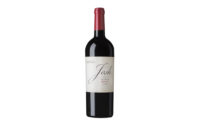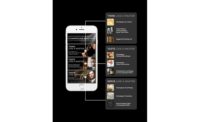2015 State of the Beverage Industry: Whiskey, sparkling wines grow double digits
Whiskey sales outpacing vodka segment






Within the wine and spirits categories, dark spirits and sparkling wines are leading growth, according to analysts. The whiskey category, for instance, increased
11.4 percent in dollar sales and 6.9 percent in volume sales in U.S. multi-outlets during the 52 weeks ending May 17, compared with the prior-year period, according to Information Resources Inc. (IRI), Chicago.
“Over the past four years or so, whiskey has now replaced vodka as the No. 1 sub-category on dollars,” Danny Brager, senior vice president of alcoholic beverages at New York-based Nielsen, told Beverage Industry in its April issue. “Brown is back; it’s the whiskey renaissance … it’s the major sub-category growth factor.”
Among the other whiskey sub-segments, single-malt Scotch whisky grew 6.4 percent in volume and 9.2 percent in revenue to $645 million. Additionally, blended whiskey volume was up 42 percent to 8.7 million cases, while bourbon and Tennessee whiskey were up 7.4 percent in volume and 9.6 percent in value to $2.7 billion in 2014, according to data from the Distilled Spirits Council of the United States (DISCUS), Washington, D.C.
DISCUS told Beverage Industry in its April issue that the Irish whiskey sub-segment was up 9.1 percent in volume to 2.8 million cases and 10.7 percent in dollar sales to $550 million in 2014, with growth also concentrated in high-end and super-premium products. Looking ahead, The IWSR, a New York-based wine and spirits analysis company, predicts that the sub-segment will grow by 4 million cases between 2014 and 2019.
Although the whiskey segment edged out vodka, IRI data shows that the vodka segment still is growing with dollar sales up approximately 4 percent to more than $1.7 billion in the 52 weeks ending May 17 in U.S. multi-outlets. The vodka segment makes up one-third of total spirits volume, Chicago-based Technomic Inc. told Beverage Industry in its April issue.
Among the new flavored vodka products launched in 2014, strawberry was the leading flavor, present in 4.9 percent of all product launches tracked by Innova Market Insights, the Netherlands-based market research firm.
Danelle Kosmal, vice president of beverage alcohol practice for New York-based Nielsen, noted in Beverage Industry’s February issue that sparkling wines and Champagnes have been a boom in the U.S. wine market. In Nielsen measured off-premise channels excluding ecommerce, sparkling wines were up 4.6 percent in 2014, with domestic up 1.9 percent and imported posting growth of 8.2 percent, she said.
According to IRI data sparkling wine and Champagne dollar sales increased 11.1 percent, totaling more than $857 million for the 52 weeks ending May 17 in U.S. multi-outlets. Volume sales also were up with the segment posting an 8.3 percent increase.
In IRI-measured channels, table wine dollar sales increased 4.8 percent totaling $9.4 billion, while its volume sales were up 1.9 percent in the 52 weeks ending May 17.
These growth numbers are reflective of how the segment has performed between 2009 and 2014. According to Chicago-based Mintel’s October 2014 report “Wine – US,” Champagne and sparkling wine saw the largest percentage of sales growth in that five-year time frame, increasing nearly a quarter. However, the report notes that it still accounts for only 5 percent of the overall wine category volume.
The market research firm does note that the segment has the potential for more growth. Citing its May 2014 report “Alcoholic Beverage Drinking Occasions – US,” Mintel found that nearly half of respondents aged 25 to 34 reported drinking sparkling wine or Champagne at home. “The smaller segment may focus attention on staying with these drinkers as they age, in order to match the relevance of table wine through the years,” the report states.
Looking for a reprint of this article?
From high-res PDFs to custom plaques, order your copy today!








